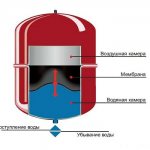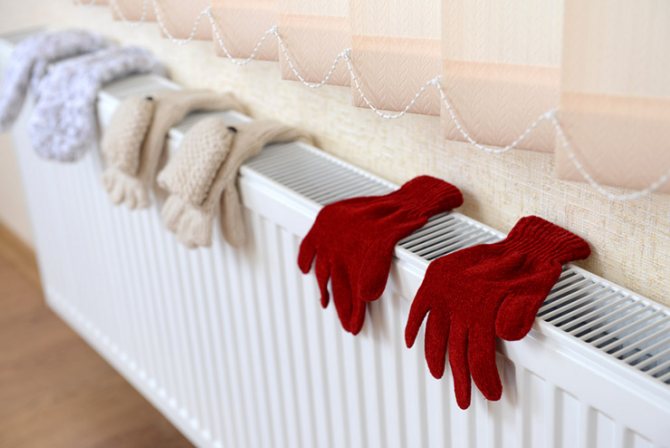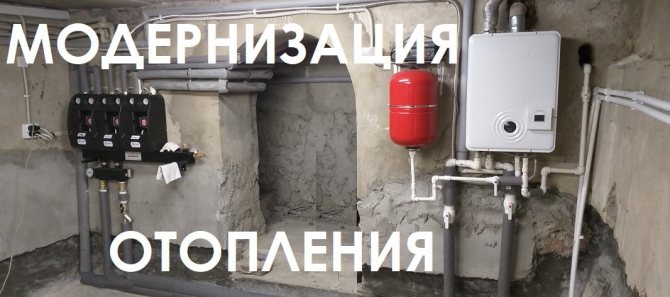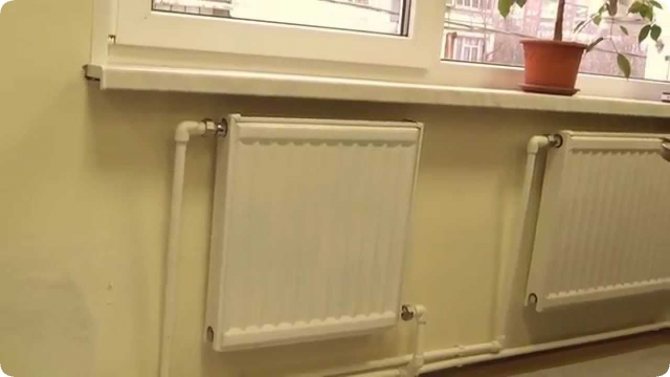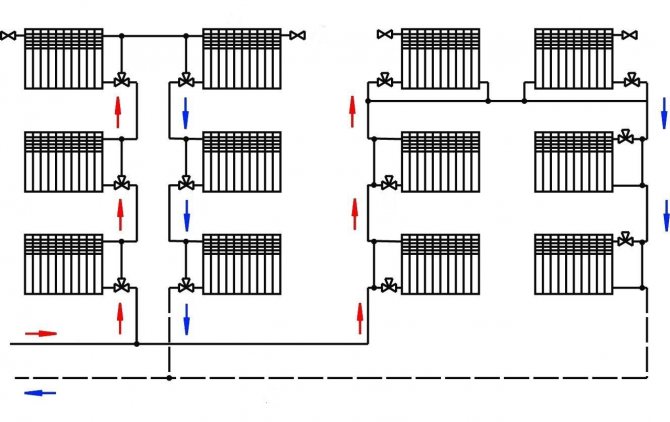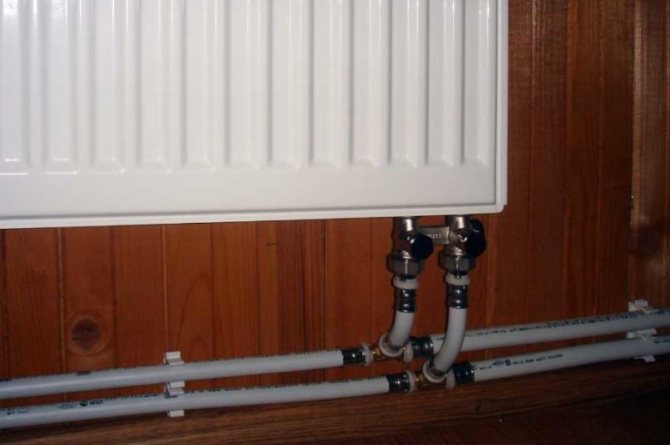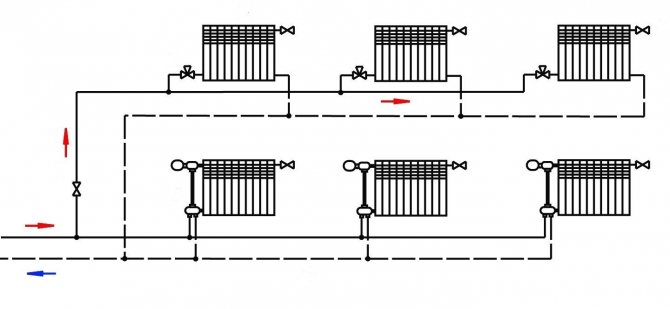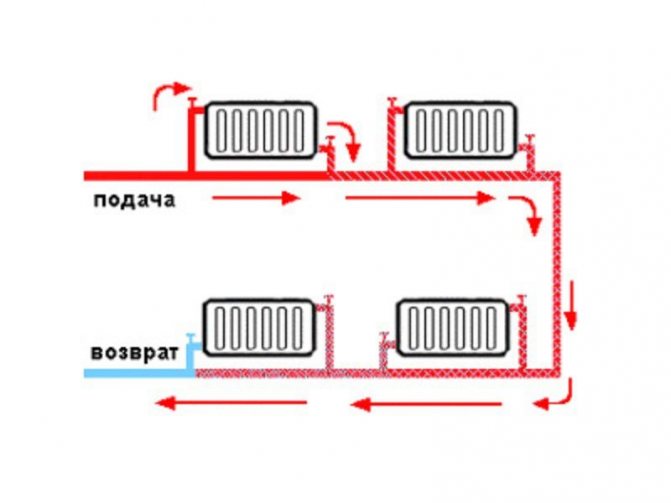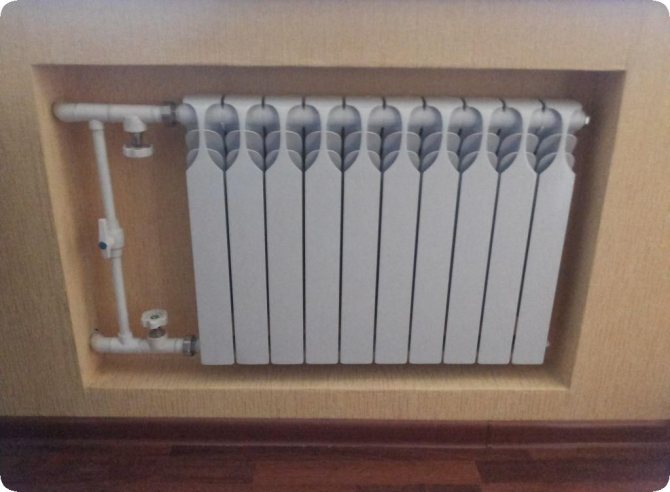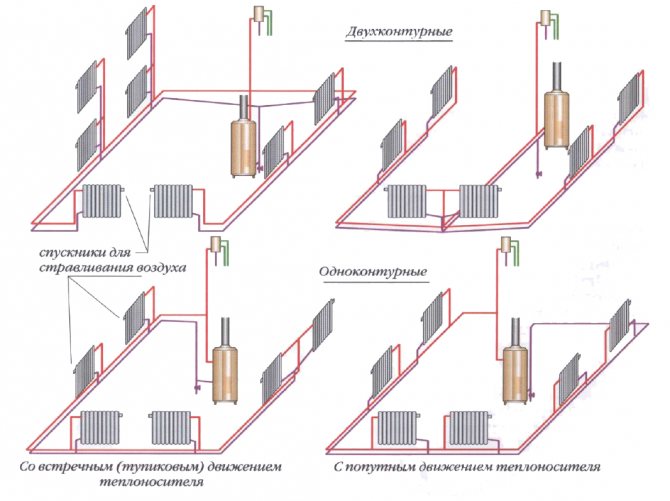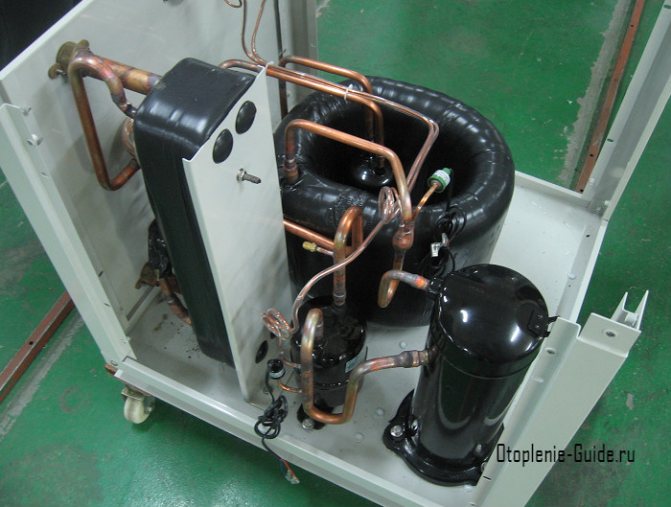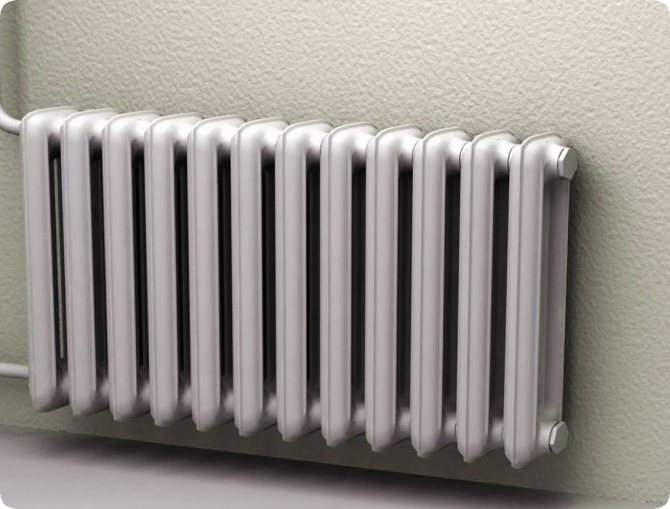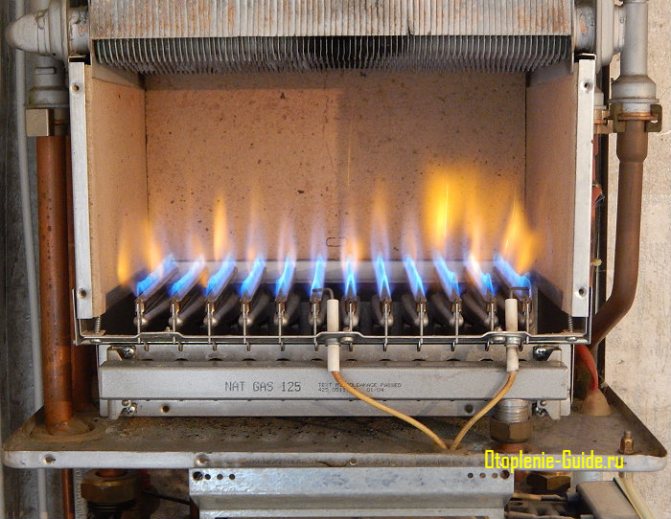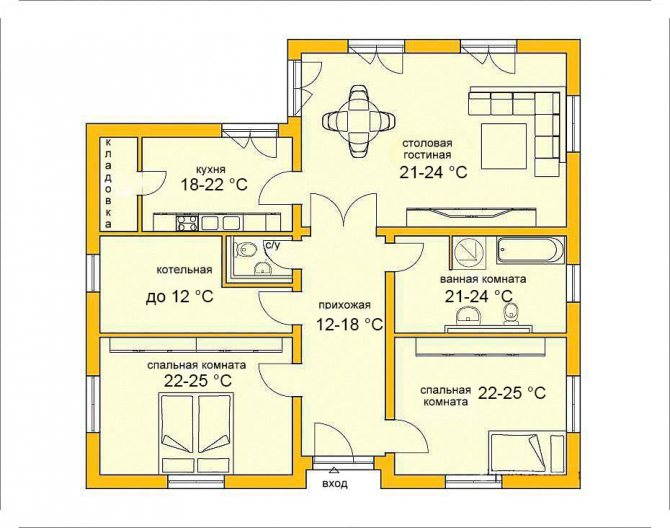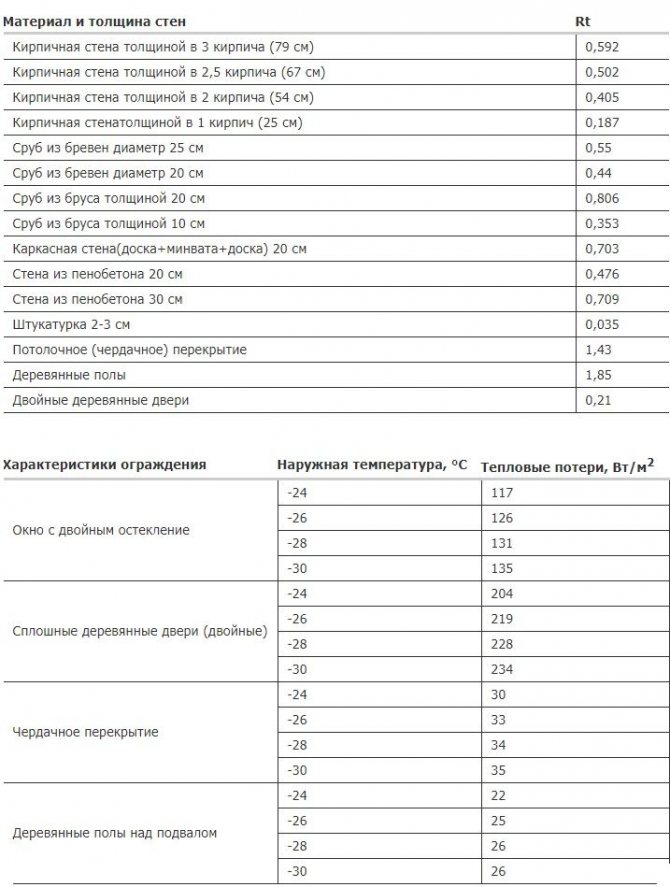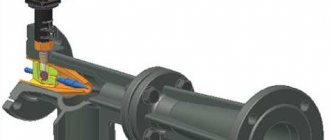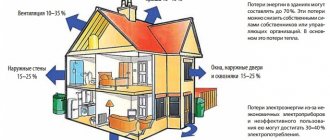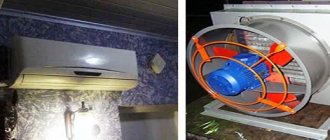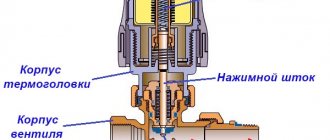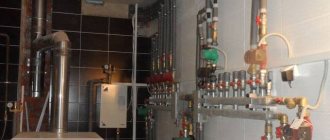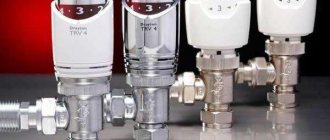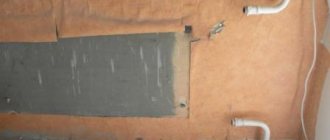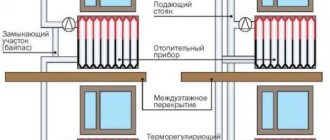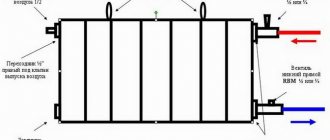Disadvantages of a closed heating system
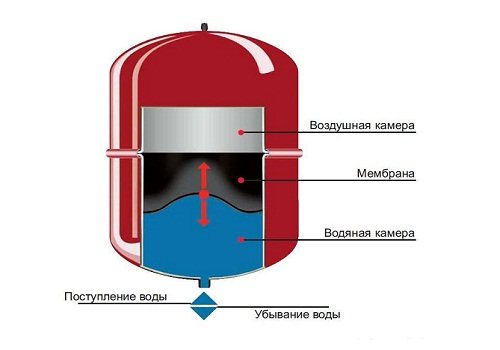
Diaphragm expansion tank
The disadvantage is the presence of a diaphragm expansion tank, which must have a large volume. A tank is selected with the expectation that its volume should be equal to 0.03 of the total volume of the heating system. The tank is filled only by 0.3-0.6 of its full volume, the remaining volume remains for a possible increase in the volume of the coolant. It should also be borne in mind that the larger the heating system, the less filling the expansion tank. The diaphragm expansion vessel in the heating system serves to maintain the pressure at certain values.
Another drawback is that the circulation of the coolant is forced, therefore, when the electricity is turned off, the operation of this system is not possible.
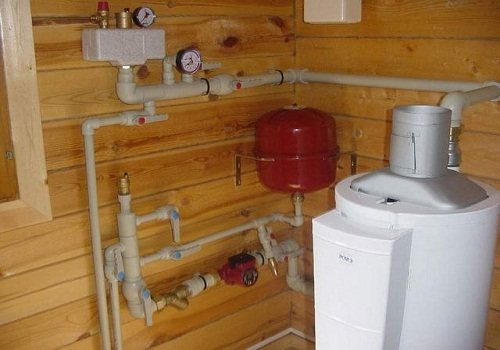

Closed heating system photo
Heating a two-story house with warm floors
In addition to radiator heating, a system such as underfloor heating can be installed in the house, which significantly comfort your life. But using a warm floor as the only source of heat, especially in a large two-story house, is still not desirable, since it will be extremely problematic to achieve full heating. We recommend installing underfloor heating in rooms where it is problematic to install radiators, for example, in the attic floor or in the bathroom. It is equally important to provide underfloor heating in rooms with a "cold" floor covering, for example, in the kitchen, where most often there are tiles or in the corridor.
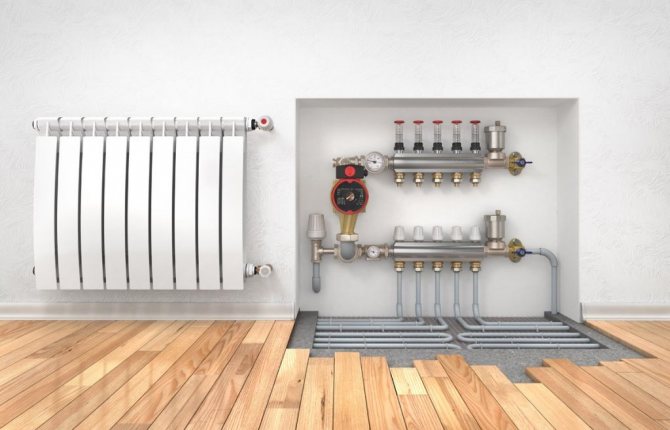

The heating of a two-story private house may differ not only in the selected heating elements or the presence of additional pumping equipment, but also in the method of laying pipes along which the coolant will move. This can be a one-pipe scheme, in which one pipe leaves the boiler as a supply line for the hot coolant, and it also returns back to the boiler along with the cooled coolant. A single-pipe heating system for a two-story house can be performed in two different ways:
1. In the first case, the supply line, leaving the boiler, passes through the first floor and after the last radiator rises to the second, where all radiators are also tied, after which the return line returns to the boiler. This method of implementing a one-pipe heating system has a big drawback, which consists in a serious temperature difference in the coolant. At the heat exchanger in the boiler, a temperature shock occurs due to the fact that the outlet temperature of the coolant is very high (about 80 degrees), and a very cold "return" (about 35 degrees) returns - this is very destructive for boilers, for example, cast-iron heat exchangers in floor-standing boilers can burst, and steel ones are deformed.
2. To avoid a large temperature difference, it is necessary to divide one large circuit of two floors into two circuits per floor. But it is not enough just to divide the heating into two circuits so that the coolant circulates in the required amount, both on the first and second floors, it is necessary to implement balancing using balancing valves and thermometers that are installed on the return line of each of the circuits. The system is considered balanced when the return temperatures of both circuits are the same.
How a closed heating system works
Heating of the coolant to the required temperature occurs in the boiler. After that, due to the circulation pump, the coolant circulates through the system.When heated, the coolant expands and increases in volume, which leads to an increase in pressure in the heating system. All excess volume of the coolant enters the expansion tank, which regulates the pressure.
But the options are not excluded that the pressure range will be exceeded and, in order to avoid rupture of the radiator, a safety valve is installed through which, in a critical situation, the coolant will be discharged. The room is heated through a heating device through which the coolant circulates. The filter removes suspended matter and dirt from the system. Despite the fact that the system is closed, the possibility of air entering the coolant is not excluded, and air can also enter the system after flushing the heating system.
The automatic air valve does this very well. Also, to ensure the operation of the heating system, it is necessary to provide for feeding the network from the water supply, and if the pressure of the water supply is not enough, then it is necessary to install a make-up pump.
If you have any questions about a closed heating system, ask them in the comments, I will be happy to answer.
Efficient heating made easy!
Modern insulation materials are good at saving heat, but they work better when paired with an energy-efficient heating system. The industry leader is the Uponor warm water circuit. These systems have been in use for over 40 years and have proven to be reliable, efficient and user-friendly technologies. For greater comfort, the manufacturer offers a service for the selection of certified companies and installers. Read about how to get maximum heat transfer with minimum energy consumption in our article.
The high cost of heating fluids, the desire to live in a spacious house and not limit oneself in square meters, as well as the desire to live in comfort, without throwing coal into the furnace, are the main reasons for abandoning the standard grandfather's methods and the search for civilized options for heating a country house.


Water circuit: everything new is well forgotten old
The water circuit has been in use for over 40 years. During this period, the system has proven itself well, the installation schemes for the underfloor heating have been finalized. And with the advent of XLPE pipes, a new era of underfloor heating for country houses has begun.
Thus, Uponor has tested its pipes for more than 30 years without interruptions and holidays, supplying hot water with a temperature of +90 ° C.
Note: effective heat transfer begins already at a coolant temperature of + 25 ... + 30 ° C. On average, in the cold season, it is enough to maintain the temperature of + 35 ... + 45 ° C to keep the rooms warm and comfortable.
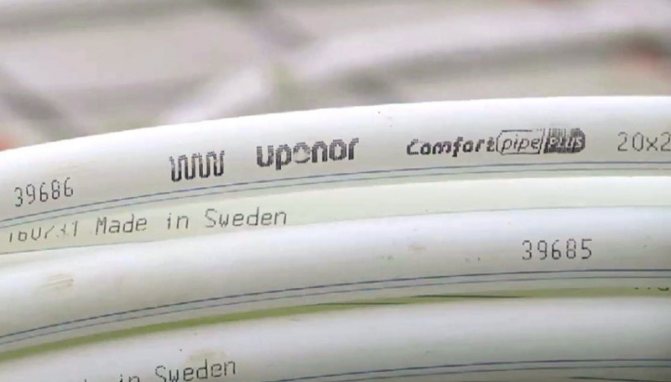

There is no risk of leaks at all
Heating for country houses is designed for use during the entire life of the house - without leaks, without the risk of failure and without scale. The patented Uponor piping has no joints or joints, thereby eliminating the possibility of leakage. To incorrectly install a warm floor, you need to try hard. But for maximum efficiency of the system, it is recommended to invite professional installers of underfloor heating.
After installation, even before pouring concrete mixture, hydraulic tests are carried out. To prevent even the slightest accidental damage, water is supplied to the system under high pressure.
Note: the manufacturer gives a 10-year warranty on components.
Comfortable temperature without the risk of overheating
The Uponor circuit does not need to be heated as much as radiators. The system gives off heat efficiently and heats the room evenly. Effective heat transfer begins already at a temperature of + 30 ° C, while the surface temperature does not rise above + 23 ... + 27 ° C.
- Calculation technologies are used that show the operating temperatures of all elements of the system.
- It is possible to develop a scheme for installing a warm floor individually for each room.
- Restrictions are taken into account depending on the type of flooring.
The Uponor water circuit is versatile: in winter it acts as a heating system, in summer it cools the cottage. Unlike conventional systems, it is silent, does not require seasonal training, spends several times less energy, there is no risk of getting sick, and no additional spending is needed.
Economic expediency
When building a house, each of us makes calculations, choosing certain materials, taking into account the cost of the coolant, the total cost per year, the cost of maintenance and the service life of the system.
- Uponor systems are Finnish design.
- For more than 40 years they have been used in countries with a similar climate (Finland, Sweden).
- They pay off already in the first year of operation!
- Installation of underfloor heating under any coating (tiles, laminate, parquet, board).
These floors have proven to be economical with figures, facts and kilowatts of real energy savings.
Uponor heating systems work with any type of heating medium, from standard boilers to heat pumps and solar energy. The economic effect of installing such a heating system for a country house is clearly visible in the calculations and specifications. They can be obtained from the Uponordom service.
Specialists use software that takes into account more than 10 parameters, up to the number of windows, when preparing a heating installation scheme in order to create a water circuit with efficient heat transfer and maximum energy efficiency.
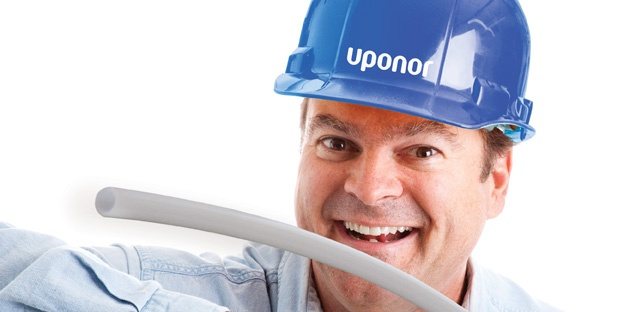

You will receive detailed information from the service in 1-2 days, an approximate calculation of the cost of components for installing a warm floor can be done independently using a calculator.
Uponor: easy to install, easy to operate
Uponor is heating that doesn't tie you to your home. There are several control systems that regulate the temperature of the heating medium, the temperature in each room and provide information about the state of the heating system. She herself adjusts the parameters, conducts diagnostics, taking into account the data from the sensors.
1. Uponor floors are optimal for country houses of permanent and temporary residence:
- independently maintain the minimum required temperature;
- do not require conservation;
- raise the temperature to the required quickly and at the right time.
2. Controlled by the Smatrix system:
- Smatrix APP is installed on a PC, phone or tablet (including for remote control);
- independently adjusts the parameters of work, analyzing and eliminating errors;
- saves another 20% energy.


3. Simplicity of settings:
- even a teenager can figure it out;
- you can set your own parameters for each room;
- you can program your own modes in addition to the main ones.
Leaving on a business trip or on a trip, it is enough to set the desired mode in order to maintain the temperature at the minimum required level. And by your return, the rooms will be warm and cozy.
High-quality insulation + efficient heating = a guarantee of a warm home
Manufacturers of modern materials provide maximum information: about the service life, about guarantees, about how best to combine their materials with others. For details on how to minimize heat loss and how to correctly combine materials for thermal insulation and a home heating system, read on the manufacturers' official websites. Professionals immediately give feedback: calculations, specifications, useful recommendations. On the Uponordom website - the official service for finding installers - there is a service for requesting detailed calculations from all specialists at once.This is especially important if you are trying to choose the most economical option for installing heating for a country house and decide which of the three options is more profitable: self-installation, search for private craftsmen or official service.
You will be surprised, but the cost of installing other similar systems from self-taught installers is often higher, without guarantees, contracts and objective specifications. And the installers recommended by the manufacturer send the specifications and estimates, which show how much the floors cost, the installation of the heating system and what the heating costs will be.
Heating with which system is more reliable
When deciding which heating system to choose, it should be remembered that the most reliable, as a rule, are those systems that are structurally simple. The small number of elements that make up the system significantly reduces the likelihood of its failure.
The validity and, accordingly, the popularity of a particular system is also an indicator of its reliability. Such systems are well known to installers, who will always be able to install them in accordance with the technical standards and the wishes of the owner.
Each new product always contains a certain element of risk. Special care should be taken when sellers are trying to persuade you to buy something ultra-modern at the price of traditional equipment. Affordability in such cases is achieved through simplifications and the use of low-quality components.
Reliability is also expressed in the ability of the system to provide heating almost always. If we take, for example, equipment that heats a house using natural sources (earth, sun), it will be useless if the weather turns out to be unfavorable.
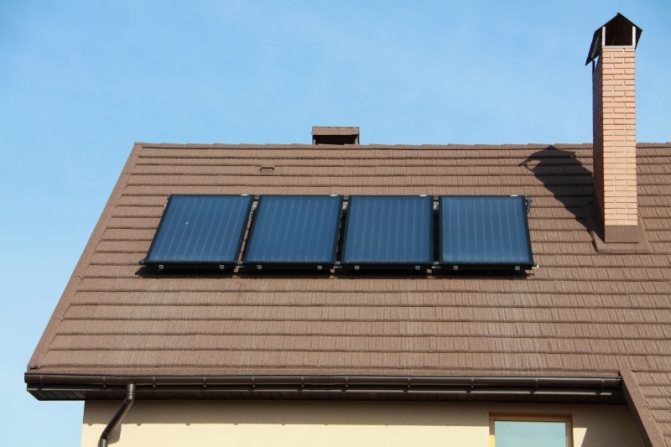

Neither stoves, nor fireplaces, nor solid fuel boilers will give us heat, if we do not take care in time and load fuel into them.
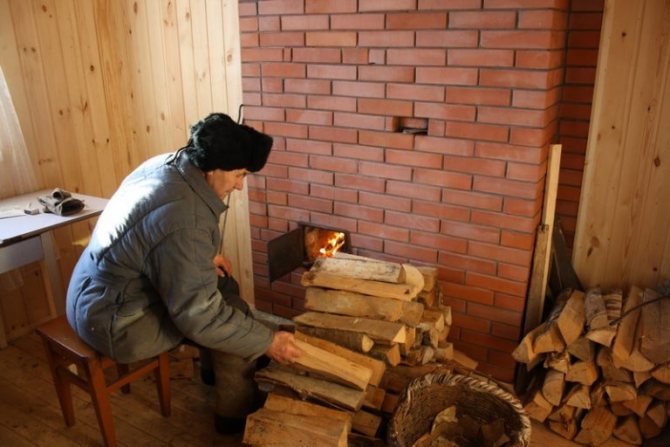

If we talk about equipment running on gas or liquid fuel, then its reliability is higher, since the fuel is supplied in it automatically. But their reliability is also limited: the fuel supply must be prepared in advance.
Electric heating equipment has the highest reliability. It has a fairly simple structure, it rarely breaks. You might argue that power outages can be a problem. But after all, almost any modern equipment, no matter what fuel it runs on, will stop if electricity suddenly disappears. Except for the grandfather's oven, perhaps. But you can hardly call it a system.
Replacing heating batteries in an apartment: when is it needed?
As often happens, a person is not always ready for change, even when they ring his doorbell. According to the apartment owners, most often heating batteries are replaced in an apartment building in winter, which entails a change of the entire heating system. This is not surprising, since pipes do not show their shortcomings during the non-heating season.
When do you need to replace the heating in the apartment?
Most often, replacement of the heating system in an apartment building is required if:
- Depressurization has occurred in pipes or radiators.
- Heat dissipation has become worse.
- The system is clogged.
- Changes are required in the interior of the apartment.
The heating system with all its elements and devices belongs to the public utilities, therefore, without the permission of the law, alteration of heating in an apartment and any other actions are illegal.
As a rule, a representative of the housing office gives an assessment of the state of the old heating and permission to install a new one. Only after the "go-ahead" for dismantling is received and a scheme of work is drawn up, you can think about how to change the heating battery in the apartment.
Installation features
The installation is carried out so that in the future you can turn off any heating device with your own hands without stopping the operation of the entire system and draining the liquid from it.For this, professionals use specialized shut-off valves, which are located at the inlet and outlet to the radiators. Using the installed taps, you can manually adjust the temperature.
Another feature is the installation of a safety group at the exit from the heating boiler. The main task of such a group is to relieve pressure if it exceeds the norm. The group includes such parts as:
- pressure gauge - pressure controller;
- safety valve - responsible for collecting pressure when the safe maximum is exceeded;
- air vent - removes air during "airing".
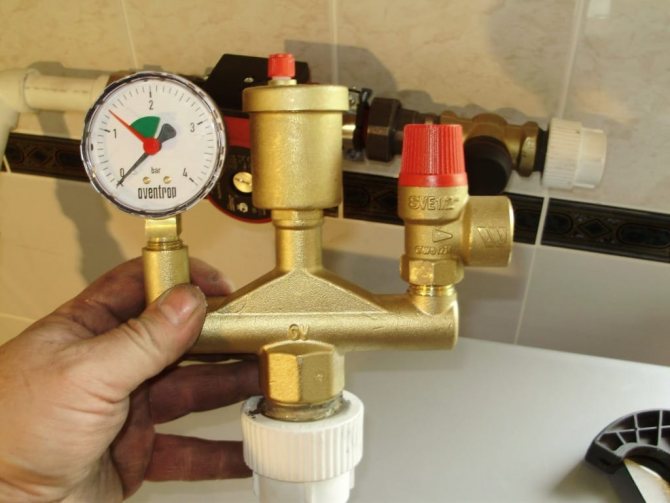

A device for measuring the pressure in the system.
Stages
Do-it-yourself installation of a closed system is carried out in the following order:
- the boiler is installed;
- pipes are led to the boiler, to which radiators are hung;
- after all these procedures, an expansion tank is attached;
- a pump and thermoregulation devices are installed in the heating circuit.
The heating tank can be built into the oven. A separate boiler room in a private house is not required. If the sequence of the circuit is followed, and the equipment is correctly selected, then the system will become an effective heat source.
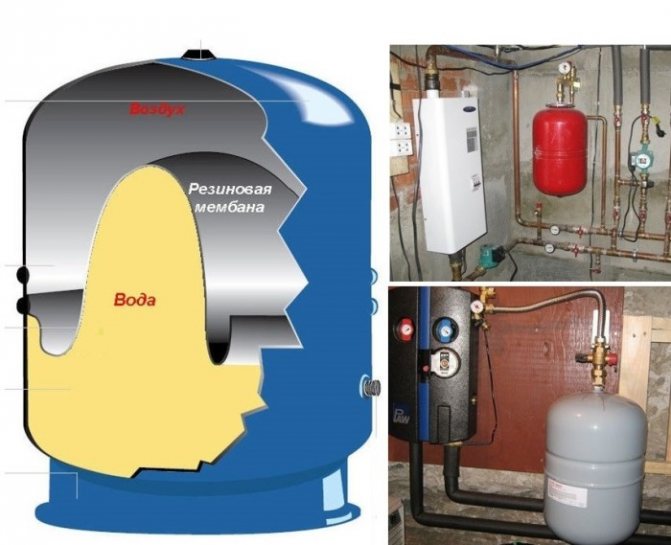

If rework
There are often options when an already existing open system has ceased to suit the user, and it needs to be redone into a closed one. To do this, it is necessary to replace the expansion tank with a membrane one and install it on the return line together with thermostats.
A mud filter is placed in front of the pump, and the old open tank is removed, the heating system is closed by welding to a new tank. The safety group is also installed at the outlet of the boiler: it is better to use ball or plug valves.
Features of the
In such a scheme, the tank has one feature: it can be completely filled with a coolant. Consequently, it will be much easier to maintain pressure than with a simple expansion vessel. But if improperly filled, air can still get into the radiators and pipes.
To get rid of the air in the tops, it is necessary to use float air vents. To remove the air dissolved in the coolant, separators are used, which are placed in the pipes. Thanks to the separators, the coolant is deaerated, and the system works stably, without technical failures.

